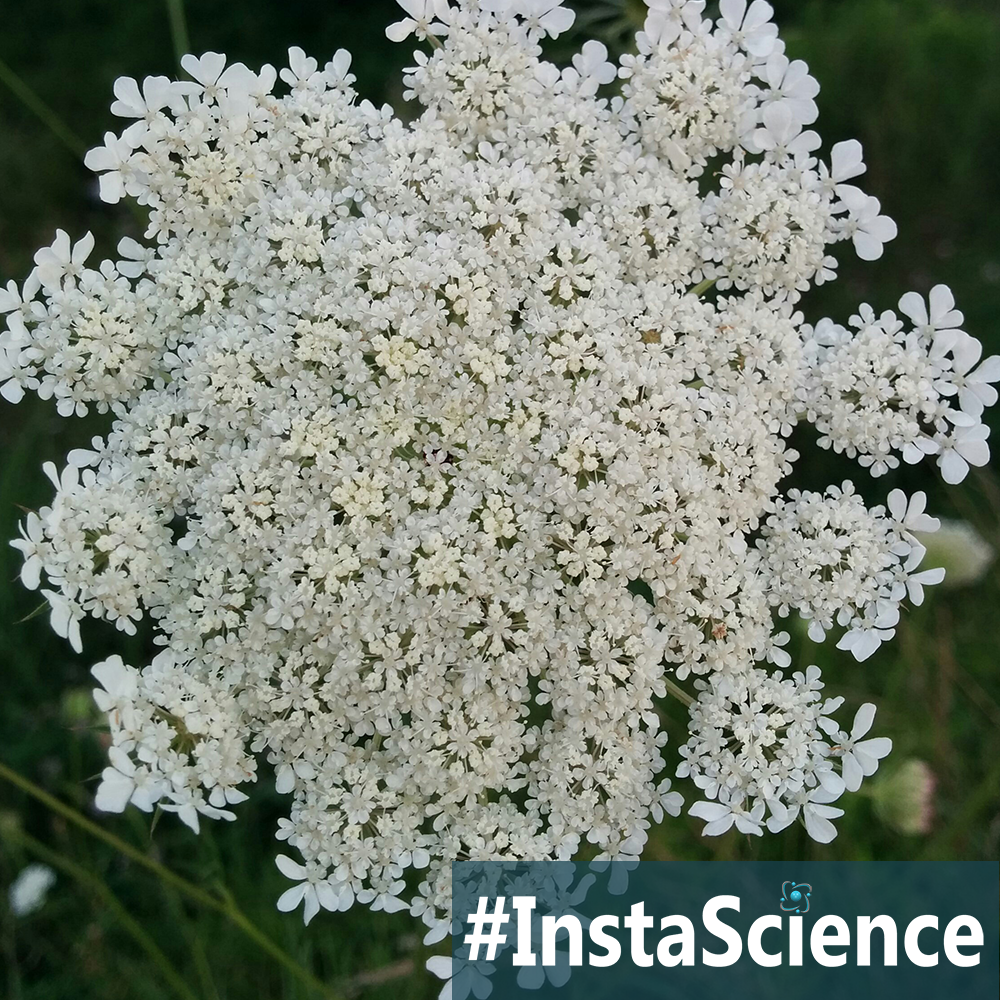
One of my favorite late summer field flowers is the Queen Anne’s Lace. There is a myth that says this flower has been named after Queen Anne of England who was an expert in making lace. Based on the legends, Queen Anne pricked her finger with a needle and a single drop of blood fell onto the lace, leaving the dark purple floret found in the flower’s center.
However the color got there, these flowers have rounded petals that are tiny and creamy white. As they bloom, they resemble a lacy, flat-topped clusters with a conspicuously dark purple flower at the center of many of the blooms. These flowers are flanked by three disproportionately long and dark green sepals.
The stalk of the Queen Anne’s Lace grows up to four feet tall. The leaves are fern-like and grows two to three inches long.
Queen Anne’s Lace is commonly found in the open areas, dry fields, roadsides, meadows, and ditches. It is a biennial plant, which means it lives for two years. Though it was originally introduced from Europe, Queen Anne’s Lace thrives in dry environments and is very hardy.
Fun Fact
Queen Anne’s leaves and stem give off a carrot odor when crushed, which is why it is commonly called “Wild Carrot.”
Learn More at the Following Website Links
- http://www2.fcps.edu/islandcreekes/ecology/queen_annes_lace.htm
- http://www.ediblewildfood.com/queen-annes-lace.aspx
- http://www.gardeningknowhow.com/ornamental/flowers/queen-annes-lace/queen-annes-lace-plant.htm
- http://www.bio.brandeis.edu/fieldbio/Wildflowers_Kimonis_Kramer/PAGES/QUEENANNESLACE_PAGE_FINAL.html
 Sign up below to receive weekly tips & tools for homeschool science and we'll send you a FREE copy of
Sign up below to receive weekly tips & tools for homeschool science and we'll send you a FREE copy of